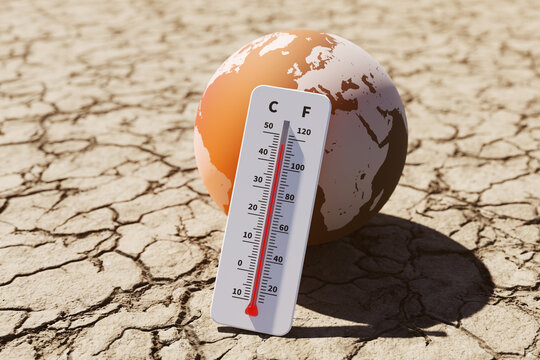- July 12, 2024
- Posted by: Precious David
- Category: Uncategorized

The phrase “more heat, more often” has become an alarming reality as temperature records continue to shatter across the globe. This trend is not just a fleeting anomaly but a clear indicator of the accelerating climate crisis that demands urgent attention and action.
In 2023, July was declared the hottest month ever recorded on Earth, with global average temperatures reaching unprecedented levels. The European Union’s Copernicus Climate Change Service reported that the month was 0.33°C warmer than the previous record set in July 2019 [1]. This isn’t an isolated incident; rather, it’s part of a broader pattern of intensifying heat waves and rising temperatures worldwide.
Recent temperature records include:
- Death Valley, California, reached 54.4°C (130°F) in August 2020, potentially the highest reliably recorded temperature on Earth [2].
- In July 2021, Lytton, British Columbia, hit 49.6°C (121.3°F), the highest temperature ever recorded in Canada [3].
- The UK saw its highest temperature of 40.3°C (104.5°F) in July 2022, breaking the previous record by 1.6°C [4].
- In July 2023, Phoenix, Arizona, experienced a record-breaking 31 consecutive days with temperatures at or above 110°F (43.3°C) [5].
These escalating temperatures are closely linked to increased greenhouse gas emissions. While carbon dioxide often takes center stage in climate discussions, methane, a potent greenhouse gas, plays a significant role in short-term warming and requires immediate attention.
Methane Abatement and Anthropogenic Sources
Methane is approximately 84 times more potent than carbon dioxide in trapping heat over a 20-year period [6]. While it has a shorter atmospheric lifespan than CO2, its impact on near-term warming is substantial. Addressing methane emissions, particularly from anthropogenic sources, presents an opportunity for rapid climate action.
Key anthropogenic sources of methane include:
- Agriculture: Livestock farming, especially cattle, is a major source of methane through enteric fermentation and manure management [7].
- Fossil Fuel Industry: Oil and gas operations, including extraction, processing, and distribution, often result in methane leaks [8].
- Landfills and Waste Management: Decomposition of organic waste in landfills produces significant amounts of methane [9].
- Rice Cultivation: Flooded rice paddies create anaerobic conditions that lead to methane production [10].
Methane abatement strategies for these sources include improving livestock management practices, enhancing leak detection in oil and gas infrastructure, implementing landfill gas capture systems, and adopting alternate wetting and drying techniques in rice cultivation [11].
The Global Methane Pledge, launched at COP26 in 2021, aims to reduce methane emissions by at least 30% from 2020 levels by 2030 [12]. This initiative recognizes the crucial role of methane abatement in mitigating near-term temperature increases.
As temperature records continue to fall, the urgency of addressing all greenhouse gas emissions, including methane, becomes increasingly clear. By focusing on methane abatement, particularly from anthropogenic sources, we have an opportunity to slow the rate of warming in the coming decades. This approach, combined with long-term CO2 reduction strategies, offers a comprehensive path to combating the climate crisis and potentially halting the relentless breaking of temperature records.
References:
[1] Copernicus Climate Change Service. (2023). “Surface air temperature for July 2023.”
[2] National Park Service. (2021). “Death Valley National Park Weather and Climate.”
[3] Government of Canada. (2021). “Canada’s Top Ten Weather Stories of 2021.”
[4] Met Office. (2022). “UK temperature record exceeds 40°C for the first time.”
[5] National Weather Service. (2023). “Phoenix Climate Data.”
[6] Intergovernmental Panel on Climate Change. (2021). “Sixth Assessment Report.”
[7] FAO. (2021). “Global Livestock Environmental Assessment Model (GLEAM).”
[8] IEA. (2023). “Methane Tracker 2023.”
[9] EPA. (2022). “Basic Information about Landfill Gas.”
[10] IRRI. (2022). “Climate change-ready rice.”
[11] Global Methane Initiative. (2023). “Methane Mitigation Strategies.”
[12] United Nations. (2021). “Global Methane Pledge.”
